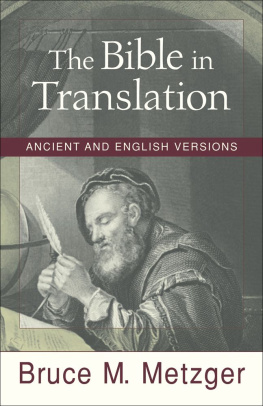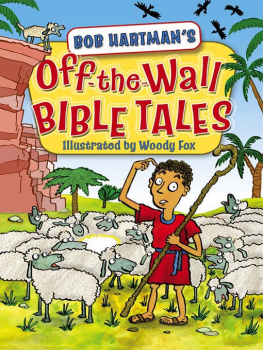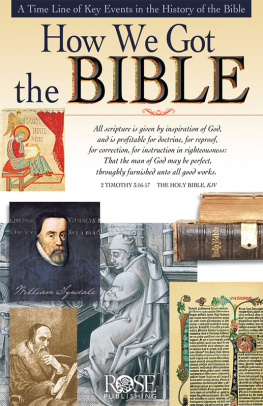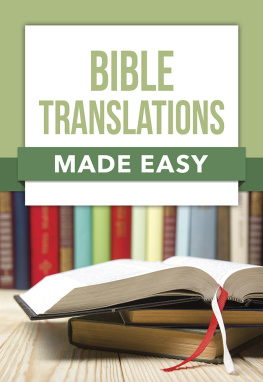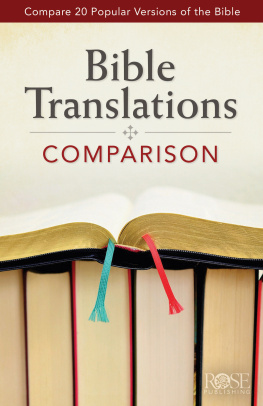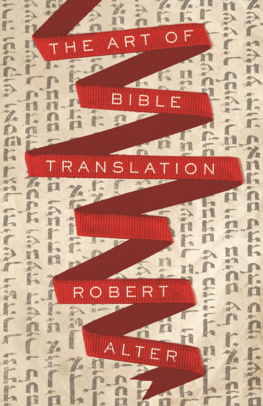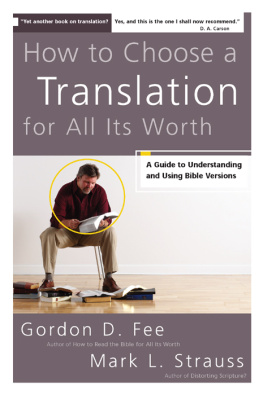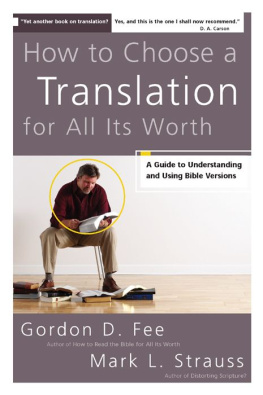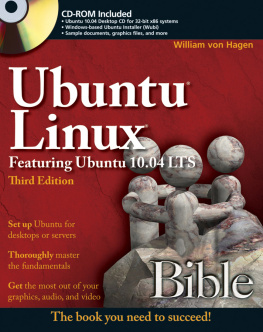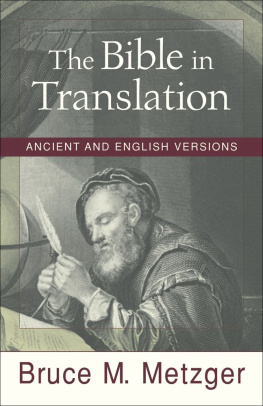
2001 by Bruce M. Metzger
Published by Baker Academic
a division of Baker Publishing Group
P.O. Box 6287, Grand Rapids, MI 49516-6287
www.bakeracademic.com
Ebook edition created 2011
All rights reserved. No part of this publication may be reproduced, stored in a retrieval system, or transmitted in any form or by any meansfor example, electronic, photocopy, recordingwithout the prior written permission of the publisher. The only exception is brief quotations in printed reviews.
ISBN 978-1-5855-8349-2
Library of Congress Cataloging-in-Publication Data is on file at the Library of Congress, Washington, DC.
Cover illustration: St. Jerome in His Study , by Albrecht Drer (1514).
Contents

Preface

It is common knowledge that the Bible has been translated into more languages than any other piece of literature. What is not generally appreciated, however, is the great increase in the number of different translations that have been produced relatively recently, that is, during the nineteenth and twentieth centuries. Before this period, the church, it must be confessed, had been rather slow in providing renderings of the Scriptures in other languages.
According to a recent calculation, there are some 6,800 living languages in the world. Estimates of the number vary because judgments differ as to whether a particular form of speech should be called a separate language or even a distinct dialect. In certain instances, local governmental decree has given language status to a dialect. In other instances, what are really distinct languages have been regarded as mere dialects, as is the case of many of the so-called dialects of Chinese. Linguistically, they are quite distinct languages, but because of their orthographic dependence on Mandarin Chinese, they have generally been considered dialects.
Whatever the precise number of languages may be, it is certainly surprising that by the year A.D. 600, the four Gospels had been translated into only a very few languages. These were Latin and Gothic in the West, and Syriac, Coptic, Armenian, Georgian, Ethiopic, and Sogdian in the Eastto which also Nubian might need to be added. One might have expected that Augustine and other Christian leaders in North Africa would have provided a translation of the Gospels into Berber or Punic or that Irenaeus and his successors would have made a translation into the Celtic dialect used in Gaul. But there is no evidence of the existence of such versions in antiquity, despite the presence of Christian communities in these areas.
When the art of printing with movable type was invented by Johannes Gutenberg in 1456, only thirty-three languages had any part of the Bible. Even when the Bible society movement began some two centuries ago, only sixty-seven languages had any portions. During the nineteenth century, however, more than four hundred languages received some part of the Scriptures, and within the first half of the twentieth century, this figure increased by more than five hundred. This rapid increase in the preparation of versions of the Bible is due to the role played by Bible societies, Wycliffe Bible Translators, and similar organizations.
The history of the translation of the Bible can be divided into four major periods. The first period includes the efforts to translate the Scriptures into several of the dominant languages of the ancient world. The second important period of Bible translating was related to the Reformation, when renderings were no longer made from the Latin Vulgate translation but from the original Hebrew and Greek text into the vernaculars of Europe. The third period may be called the great missionary endeavor, when pioneer translators undertook the preparation of renderings into hundreds of languages and dialects, in many of which there was previously often not even an alphabet. Such work is still going on, while a fourth period has already begun. This is characterized primarily by translations being produced in newly developing nations, where native speakers often assume primary responsibility, with missionaries sometimes serving as consultants. This has many advantages, since it is invariably easier for properly trained people to translate into their own mother tongue than into a foreign language, and the end product is likely to be more effective.
By the opening of the year 2000, the entire Bible had been made available in 371 languages and dialects, and portions of the Bible in 1,862 other languages and dialects. The following is a summary, by geographical area and type of publication, of the number of different languages and dialects in which the publication of at least one book of the Bible had been registered by the American Bible Society as of January 1, 2000.
Statistical Summary
| Continent or Region | Portions | Testaments | Bibles | Total |
| Africa | 218 | 267 | 142 | 627 |
| Asia | 228 | 212 | 113 | 553 |
| Australasia/Pacific Islands | 172 | 194 | 30 | 396 |
| Europe | 106 | 29 | 62 | 197 |
| North & Central America/Caribbean | 41 | 25 | 7 | 73 |
| South America/Mexico | 135 | 233 | 16 | 384 |
| Constructed Languages | 2 | 0 | 1 | 3 |
| Total | 902 | 960 | 371 | 2,233 |
Part 1 of the present book describes all of the ancient versions of which significant portions have survived today. Part 2 discusses a selection of English versions, chosen from the sixty more or less different English translations of the whole Bible and from the further eighty or so of the New Testament alone.
Gratitude is expressed to the faculty of Dallas Theological Seminary for the invitation to deliver the W. H. Griffith-Thomas Lectures during the winter term of 1992. Material in four of the following chapters was published in the quarterly journal Bibliotheca Sacra in 1993 and is reproduced here by permission.
Bruce M. Metzger
PART 1
Ancient Versions
one
Ancient Versions of the
Old Testament Made
for the Use of Jews

The Septuagint
The Septuagint is the traditional term for the Old Greek translation of the Hebrew Scriptures. The word means seventy and is often abbreviated by using the Roman numeral LXX, referring (with some rounding off of the figure) to the seventy-two translators reputed to have produced the version in the time of Ptolemy II Philadelphus (285246 B.C .). The translation is not only the earliest but also one of the most valuable of ancient biblical versions. Whether one considers its general fidelity to the original, its influence over the Jews for whom it was prepared, its relationship to the Greek New Testament, or its place in the Christian church, the Septuagint stands preeminent in the light it casts on the study of the Scriptures.
The story of the origin of the Septuagint is given in a document of uncertain date called the Letter of Aristeas. The letter purports to be a contemporary record by a certain Aristeas, an official at the court of Ptolemy Philadelphus, who claims to have personal knowledge as an eyewitness of the following details.
Being of a literary disposition, Ptolemy wished to make a collection of the worlds best literature. His librarian, Demetrius of Phalerum, called his attention to the Hebrew Scriptures as being worthy of a place in your library since the law which they contain... is full of wisdom and free from all blemish (31). At once the king sent ambassadors to Eleazar, the Jewish high priest at Jerusalem, loading them with gold and jewels and royal salutations (33), and requested him to send a copy of the Hebrew Scriptures, with learned men who could translate the text into Greek.
Next page
